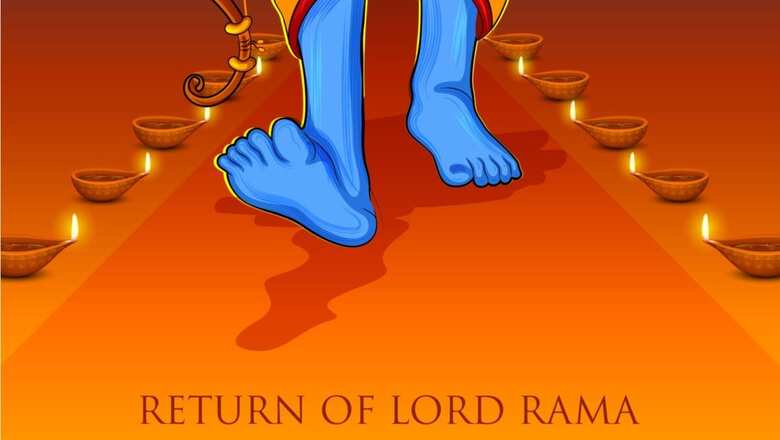
views
Diwali, also known as Deepavali, is a festival celebrated by millions of people across the world. This year, Diwali falls on November 12. It is a festival of lights, and its significance is rooted in several mythological stories. Despite being regarded as a Hindu festival, Diwali transcends religious boundaries, illuminating the hearts of people from diverse cultures and backgrounds.
It is an occasion when communities come together to share the warmth of love by exchanging traditional sweets and gifts. The thousands of glowing lamps on Diwali symbolises the significance of the victory of good over evil.
In the shimmering radiance of Diwali, the world witnesses unity amid all diversities, and it reminds us that the light of kindness and togetherness can dispel the darkness of ignorance.
Similar to other traditional festivals, Diwali has a number of mythological stories attached to it. Let’s explore some of the most popular ones.
The Return of Lord Rama to Ayodhya
Diwali is mainly associated with Lord Rama. It’s believed that on Diwali, Lord Rama, Mata Sita, and Lakshmana returned to Ayodhya after their 14-year exile. To welcome them and to celebrate their return, people of Ayodhya lit lamps, or diyas.
The Victory of Lord Krishna
According to another popular Hindu legend, Lord Krishna killed demon king Narakasura on Naraka Chaturdashi, which falls a day before Diwali. To commemorate this triumph, people lit fireworks and colourful lamps a day after on the occasion of Deepavali Amavasya. This tradition symbolises elimination of darkness or all evil forces in one’s life.
The Worship of Goddess Lakshmi
Diwali is also a time to worship Goddess Lakshmi, the Hindu goddess of wealth and prosperity. It is believed that she visits homes on Diwali night and blesses those who keep their homes clean and well-lit. People light lamps and decorate their homes to welcome her. Many believe that her blessings will bring them wealth and good fortune.
Goddess Lakshmi and Lord Ganesha are worshipped together on Diwali in many states across India for prosperity, wealth and good fortune. Many new business ventures are also launched on Diwali after worshipping Goddess Lakshmi.
The Tale of King Bali
In some parts of India, Diwali is linked to the story of Demon King Bali and Lord Vishnu. King Bali was a generous and kind-hearted ruler. Lord Vishnu took the form of a dwarf Brahmin and went to King Bali to ask for land. King Bali, known for his generosity, agreed. Lord Vishnu, in his Vaman Avatar, covered the entire Earth with three steps, and in the process, he pushed King Bali into the ‘Patal Lok’. However, pleased with King Bali’s virtues, Lord Vishnu granted him a boon to return to Earth for one day every year, which is celebrated as Bali Pratipada or Padwa, the day after Diwali.
The Legend of Yama and Yamuna
In some regions, the fourth day of Diwali is observed as Yama Dwitiya or Bhai Dooj. According to this legend, Yama, the god of death, visited his sister Yamuna on this day. Yamuna welcomed him with a special ceremony and applied a tilak on his forehead. Touched by her love and devotion, Yama granted her a wish that anyone who receives a tilak from their sister on this day would be blessed with a long life and happiness. This day is celebrated as a symbol of the bond between brothers and sisters. Bhai Dooj generally falls on Dwitiya Tithi, two days after Diwali.
The Enlightenment of Buddha
A section of Buddhists, especially the Newar Buddhists in Nepal, observe Diwali as a special occasion as it’s believed that Emperor Ashoka embraced Buddhism on Deepavali Amavasya.
Diwali is a time of joy, celebration, and togetherness, encompassing a rich tapestry of mythological stories that celebrate the triumph of good over evil, the importance of wealth and prosperity, and the significance of family bonds. During Diwali, people light lamps, exchange gifts, and share delicious food to create a bright and joyful atmosphere that continues to bring everyone together, just as it has been for centuries.


















Comments
0 comment